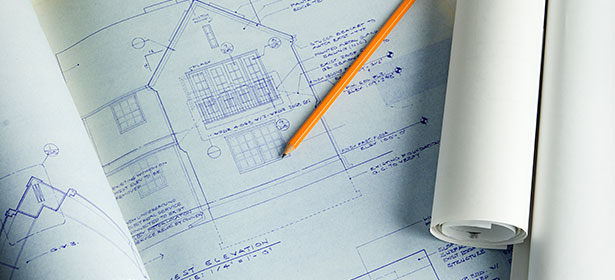But it can be an expensive job and with the cost of building materials and labour ever-increasing, it makes sense to be smart in terms of how you manage the project and spend your money.
We take you through the areas where you can possibly save on your loft conversion and also explain where to invest, so you can ensure your money is well spent.
But before doing anything, check to make sure you can convert your loft. This includes measuring the head height, roof pitch and structure. You should also know whether you need planning permission or not.
1. Loft design

Where to invest:
Getting the design right is one of the key steps for a successful loft conversion, so you need to think about what you want to do with your space. Once you decide it will underpin your strategy, potentially saving you hundreds of pounds later on.
To help you do this, we'd advise speaking with an architect and a structural engineer so that you have detailed plans covering exactly what you want to do.
Although you have to pay for an architect or a structural engineer, they may suggest an alternative design which could be more cost-effective than your original plans.
Think about:
Where to save:
You can use 3D software to draw up your initial plans. This will help you to visualise your space and picture out how it will look.
It will also make it easier when you speak with an architect. They will have good ideas and suggestions you may not have thought of, but you will also be able to come armed with your own thoughts about what would work for you.
If you want to include a bathroom, try to see where it can be best fit so you have to do minimal plumbing. The more you need to extend and move pipes, the more costly it will be.
2. Loft insulation

Where to save:
If you want to save you can install the insulation yourself, but make sure you don’t skip it to cut costs. Especially as loft insulation could reduce your energy bills by up to £315 per year depending on the type of home you live in.
Where to invest:
Professionally installed loft insulation for a typical three-bedroom, semi-detached house with gas central heating costs around £500.
It should take less than four years to pay for itself through the savings you’ll make on your heating bills if you go from no insulation to the recommended amount of insulation.
3. Fixtures and materials

Where to save:
Materials are some of the highest costs and they keep on rising, so if you know what you need you could try to buy it yourself.
Standard or off-the-shelf items will be a lot cheaper than custom-made pieces which tend to have longer waiting times and can derail or impact your project. You can even customise them in some instances to get the look you want.
There are plenty of deals to be had by looking online; second-hand and auction sites such as eBay can also be a cost-effective option.
It's worth looking out for seasonal sales. Or speak with your builder to get access to their discounts.
Where to invest:
Think carefully about many sockets, switches and lights you will need as well as any electrical work. Now is the time to get it right (and in place) as these are costly mistakes.
Also what type of windows you want or need, and where the sun will hit during the day so you can maximise the amount of natural light the room receives.
Consider the window size – do you need more windows or would a larger window be enough? In our study, 11% wished they had fitted more windows and another 11% that they had a dormer.*
4. Managing the project

Where to save:
If you have the time and skills to manage the project, it can be a good way to save money as opposed to hiring a loft conversion company who will have a project manager.
Ensure you're clear on what needs to be done, when and by who. Create a timeline and book in all of the different tradespeople who will be working on your loft conversion so that nothing is held up.
Look at the various quotes and check that you can compare like for like. Make sure all quotes include the same elements.
Where to invest:
Project managing is a challenging job and If you mismanage timeframes (for example with deliveries) it could end up costing much more. So you might be better off paying more to enlist the services of a loft conversion company which will have a site manager.
We'd advise you to budget for the unexpected. Even if you planned everything, unforeseen circumstances may happen so it's good to have a small contingency fund.
5. Getting sign off

Where to save:
The party wall agreement is the written consent from your neighbours to the works you plan to carry out. This is key if you live in a semi-terraced or terraced house as likely you will have shared walls.
Getting this right from the start is really important and will save you a headache down the line. It should be served at least two months before the construction starts.
It's important your neighbours know about your plans, including a full description of what you plan to do and how long it is expected to take.
Where to invest:
Party wall agreements can cost up to £1000 so it is important to set aside money for this.
If you don't agree with your neighbours, they can appoint their own surveyor and this will become more expensive for you.
*Online survey of 1,165 Which? Connect members in March 2022.
source https://www.which.co.uk/news/article/where-to-spend-and-where-to-save-on-your-loft-conversion-aP7cp9C4rWmt
